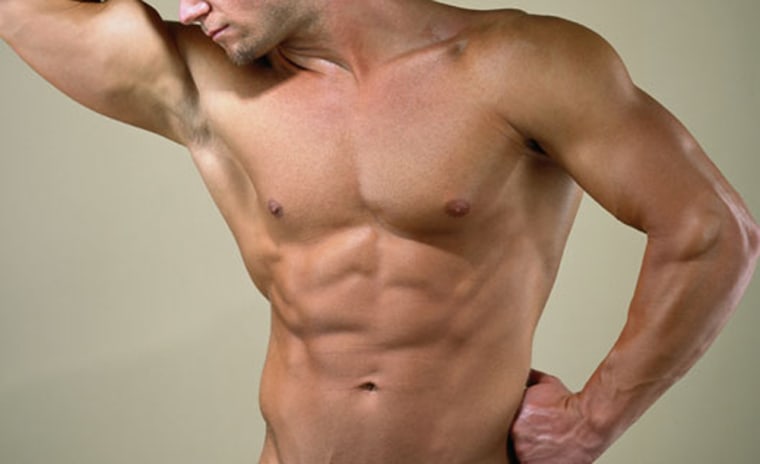If you're trying to lose belly fat, should you just do aerobic activity to shed the pounds, or should you also do crunches even though you won't see those abs for a while? Does menopause promote big bellies? And just what is a one-rep max? Smart Fitness answers your queries. Have an exercise question? To e-mail us, . We’ll post select answers in future columns.
Q: My midsection is where I need to lose the most weight. I'd like to get a nice flat stomach eventually, and I know to do that I have to do crunches at some point. But with all the fat, shouldn't I lose that first, then work on toning my torso? Or should I do cardio along with the crunches. After all, no one will be able to see my abs under my belly fat.
A: Well, yes, you can have a serious six-pack yet not be able to see it because it's covered in fat. So you do need to lose the weight in order to get a lean, mean midsection. And if you're like a lot of people, you may be carrying a little extra jelly belly around from all that holiday feasting.
But why wait to do the crunches or other abdominal work? It's hardly a wasted effort, since having toned abs also helps keep your core strong and prevent back aches.
Plus, you'll get to your ultimate goal of a "nice flat stomach" faster if you do both, notes Gina Lombardi, a personal trainer in Los Angeles. Otherwise, once you lose the weight, you have to start from scratch on toning the muscles.
"I always recommend doing both," says Lombardi. "Best to tone up what's under all that belly fat while the fat is disappearing."
So how much aerobic exercise is enough? That depends a lot on how much you eat and what kind of activity you're doing and for how long. To lose a pound of fat, you need to create a deficit of 3,500 calories.
As for those abs, aim to do crunches at least three times a week. Start with one or two sets of 10 repetitions and work up to three sets of 20, Lombardi says.
Q: My midsection is the first to get bigger when I gain weight. Does menopause contribute to not being able to lose weight in that area? When I diet and exercise, I lose weight and inches from all other parts of my body except my waist. What can I do to change that?
A: People commonly lose weight last in the first place they gain it. So that's why your midsection is such a trouble spot for you.
You can't change how your body deposits fat. And you can't "spot reduce" — lose weight in just one part of the body. But you can watch your diet and exercise regularly to lose fat all over and keep your weight in check.
As for the impact of menopause, it could play a role in promoting some weight gain, says Molly Kimball, a sports and lifestyle nutritionist at the Ochsner Health System's Elmwood Fitness Center in New Orleans.
"The body changes in hormone production can slow down metabolism," she says. "But the biggest change in metabolism (in women at midlife and later) comes from loss of muscle mass."
Women and men lose muscle as they age, which is why she recommends everyone strength train two to three days a week to keep the muscles strong. Muscle burns more calories at rest than other bodily tissues, though just how much is debatable.
We also burn fewer calories overall as we age, making diet an even more important factor in weight maintenance than before, says Kimball. That can be especially tough for older people who may be traveling more and have more income to spend on dining out.
Q: What do you mean by one-repetition maximum? How do I determine that?
A: A one-repetition maximum is the highest amount of weight that you can lift or press one time. So, for instance, it would be the most weight you can bench press or lift on the calf machine.
Personal trainers commonly advise clients to use a weight that is a certain percentage of their "one-rep max." They might say to do two to three sets of 10 biceps curls at 70 percent of your one-rep max. Then they might advise you to work up to 80 percent of your one-rep max.
The point is to not overdo it. If you max out and your muscles aren't ready for it, you risk injury.
There is no one best way to strength train, so you'll often hear various suggestions for weight programs. It's good to mix them up to keep your muscles challenged.
Smart Fitness appears every other Tuesday.
